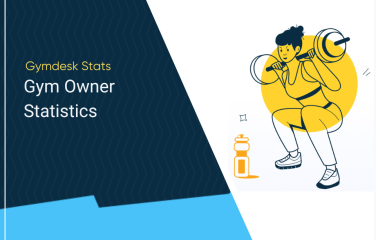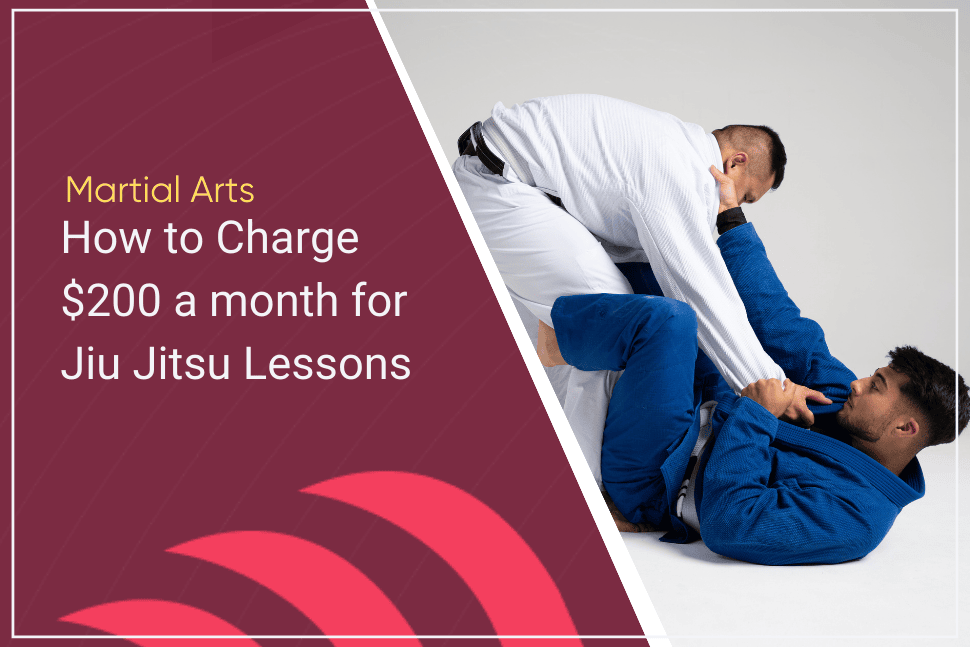A dance summer camp captures all of the magic of summer and more, offering dancers of all ages a unique opportunity to immerse themselves in rhythm, creativity, and connection. Whether you’re a studio owner planning your first camp, a dance teacher looking to inspire the next generation, or a parent searching for an enriching summer experience, a well-run dance camp can be the highlight of the season.
In the following guide we’ll break it all down for you: how to host the perfect summer dance camp that will be remembered for years to come. From curriculum planning to building your team to putting on a show-stopping final performance, here are the steps that will make your dance camp a success from the first stretch to the last bow.
Planning and Preparation
Behind every action-packed dance summer camp is the careful planning that infuses that experience with structure, creativity, and clarity. Before the music blasts through the studio and students begin grooving to the beat, you need to understand your vision and start setting yourself up for an awesome and successful program. This section takes you through the basics — setting your goals, finding the right participants, selecting dances, structuring the event, and a timeline to keep you on task.
Define Your Camp’s Goals and Target Age Group
Begin by defining what you want to achieve in the camp. Is your goal to get beginners started with dance in a relaxed, friendly environment? Or are you looking to challenge more advanced dancers, combining technique, choreography, and performance-based training?
Your goal is the anchor for everything else the camp does — from the curriculum to the marketing. Then there’s the age level for which you are designing the camp. A program for 6- to 10-year-olds will look very different to a teen intensive or an adult workshop series. Adapt content, tone, and pace to the developmental and physical needs of your participants.
Decide the Types of Dance to Focus On
After you have all your details in place about your audience, you can then decide what the ‘core’ of your camp will be – we recommend two to four different dance genres. Some of the most favored options are:
- Ballet – for discipline, grace, and foundational technique.
- Hip-Hop – for high energy, rhythm, and expression.
- Jazz – for dynamic movement and performance flair.
- Contemporary – for fluidity, emotion, and creativity.
- Tap, Lyrical, Latin, or Cultural Dance – for variety and cultural exposure.
You could specialize in one core style or provide a multi-genre program in which participants will get a feel for various techniques. Theme your days or weeks by genre or let students pick songs that interest them and suit their skill level.
Decide on the Camp Structure
The structure of your camp should fit both your goals and your participants’ timetables. Consider:
- Daily sessions (e.g. Monday to Friday for 1-2 weeks): Ideal for younger dancers or those at a beginner level who benefit from a routine.
- Weekly intensives (e.g., 2–3 days a week for a few weeks): Great for older students who have other things going on.
- Half-day versus Full-day camps: Half days are a great length for younger children or for children trying a camp for the first time. Several hours of class, cross-training, choreography, and enrichment activities can be achieved in a full-day camp.
It’s also possible to add bonus experiences such as choreography workshops, themed dance days, or creative arts workshops, enhancing movement training.
Set a Realistic Timeline
The more time you have to plan, the more seamlessly your camp will operate. Ideally, give yourself at least three to four months before the camp begins to:
- Finalize your curriculum
- Book your instructors and venue
- Create marketing materials
- Open up registration and handle logistics
A transparent planning calendar keeps everyone on track and reduces that last-minute stress.
Creating a Curriculum
With your goals, structure and dance styles set you can now begin choreographing the heart of your camp, the curriculum. A good dance camp schedule combines technical training, creativity, skill-building and fun. Whether your camps last 1 week, or 4, you want to provide participants with a sense of making progress, and ensure the experience is fresh and engaging.
Build Around Skill Progression
Plan your sessions so that each one leads seamlessly into another. For beginner or mixed-level camps, begin with movement fundamentals (posture, balance, rhythm, basic steps). Then gradually introduce more intricate combinations, formations, and choreography.
For intermediate and advanced level students, add technique work, strength and flexibility training as well as gradually increasing choreography as the camp goes on. Give students the opportunity to hone their moving, learn transitions, and perform in a variety of styles.
Include clear learning objectives each day, such as:
- Day 1: Warm-up exercises and fundamental footwork Day 2: Introduction to first step including drill and theory.
- Day Day 2: Music time, rhythm drills and group formations
- Day 3: Showcase Choreo (Pt 1)
- Day 4: Face and stage skills
- Day 5: Rehearsal, all the way up, and stepping up Day 5 was twice as nice as Day 4 with a full rehearsal in the morning, an uplifting event with a focus on confidence.
Strike a Balance Between Skill and Creativity
Structure is key, but don’t forget to make your days fun and imaginative, especially for younger campers. Also, incorporate some themed days such as “Freestyle Friday” “Costume Day,” or “Dance Around the World” where your students can bring out different dance cultures and also showcase their own.
- Include activities that allow dancers to respond (not just follow):
- Choreography labs where students work together on a short combo
- Improv for musicality and storytelling
- Moments of journaling or goal setting for dance to reflect and further establish progress
- For older campers, provide options for small group projects or even dancer-led routines to increase ownership and engagement.
Toss in Some Complementary Training
To allow for more integrated development, provide time for:
- Warm-ups and cooldowns: Prioritize alignment, joint mobility , and injury prevention.
- Conditioning: Core work, stability, and flexibility exercises, developed specifically for dancers.
- Mindfulness or relaxation (long days especially): Start with short yoga, breathwork, or guided visualization to recharge dancers.
Workshops on subjects such as injury prevention, nutrition for dancers, or performance anxiety can also offer tangible value and set your camp apart.
Prepare for a Final Showcase
If your camp has a performance or informal show, start the week by teaching a few counts of choreography, then keep building throughout the week. Distribute parts, practice movement, and develop a stage presence. The concluding performance offers a sense of accomplishment to the campers and something to work toward being able to do as a group, while also providing dancers and their parents with a great memory.
Choosing and Preparing Your Venue
The proper setting establishes the stage — quite literally — for the entire camp experience. Whether that’s your own studio, a rented community hall, or a school gym, your space should be safe, functional, and a place for inspiration. Selecting and setting up your venue with care will let your dancers feel secure, concentrated and loose to move.
Pick a Suitable Space
Begin by thinking about your camp’s organization as well as how many campers are likely to attend. That means you’ll want space for people to move around without being packed in tight. Some key features are:
- Lots of floor space: Allow people to walk and move across the room without bumping into one another’s trains.
- Right flooring: You should aim to avoid jarring the joints, therefore, a sprung or marley dance floor is perfect as this will absorb the impact and lessen the chance of injury. Don’t go for very hard concrete or completely slick ground.
- Mirrors: “They can be helpful with form, with alignment, with self-correction through your practice.
- Ventilation and lighting: Natural light and fresh air, both less common in the wintertime, are great for elevating your mood and can even help improve sleep quality.
- Sound system: Strong acoustics and proximity to speakers is essential for music-driven classes.
If you’re using a non-traditional space (like a school or hall), consider renting portable dance floors or mirrors to create a more authentic studio experience.
Provide Safety and Access
Perform a walk-through of your venue, with the intention of putting dancer safety first and foremost:
- Look for potential tripping hazards, like loose cords or uneven flooring.
- Make sure there are clearly marked emergency exits.
- Maintain the first aid kits and keep them well stocked.
- Create water stations or advise dancers to bring their own bottles.
If you’re hosting minors, then plan for a secure venue with restricted public access and pick-up and drop-off areas.
For inclusivity, ensure that the space is accessible to dancers of all abilities, with ramps or elevators as needed.
Set Up Functional Zones
Structure your work area to maximize workflow ease all day long. Consider creating:
- Primary classroom and rehearsal space for dance.
- Snack Area for rest, snacks, and hydration.
- Sign-in and Information area.
- Storage for own belongings, props, and kit.
- Parent waiting room (if it applies) or a place to post flyers and schedules.
Decorate your space to echo the spirit and theme of the camp — whether it’s posters, banners, or mood lighting for a warm and inviting feel. A well-prepared environment cultivates professionalism and excitement the moment dancers walk in the door.
Test Your Setup Before Day One
Do a dry run before camp starts. Listen to music on your speakers, adjust your mirror visibility, practice transition between activities and ensure all materials & equipment are prepared. Small issues caught early can prevent big disruptions later.
Building Your Team
A dance camp is only as strong as the people leading it. From your teachers to your behind-the-scenes folks, the group you put together will ultimately define the campers’ experience, the mood of the day, and how well they roll with the punches. Several members of our team have deep roots in the camp world, but it doesn’t matter if you run a big camp or small studio-based program; you need the right people in the right positions to create a professional, fun, and safe environment for kids.
Define the Roles You Need
Begin by determining the key roles that your camp will need. Depending on scale, your team could comprise:
- Lead Dance Instructors: This is the primary source of education at your camp – these instructors teach technique, choreograph dances, and motivate students in a positive manner.
- Assistant Instructors or Junior Leaders: They can help manage the class, demonstrate steps, give each dancer feedback, and provide additional support — particularly in larger groups or with younger dancers.
- Camp Coordinator or Manager: This person manages logistics such as registration, scheduling, supplies and also deals with day by day problem solving allowing the instructors to strictly teach.
- Support Staff or Volunteers: Depending on how large your camp is, you may require staff to assist in check-in/check-out, snack time help, supervising, or setting up and breaking down.
For camps serving minors, ensure anyone interacting with children has completed background checks and meets child safety guidelines.
Hire Passionate, Reliable People
When hiring or selecting team members, prioritize passion, positivity, and professionalism. Look for individuals who:
- Are experienced in working with the camp’s target age group.
- Have strong communication and group management skills.
- Are adaptable and calm under pressure.
- Align with your studio or brand values.
- Are excited to work as part of a team and create an uplifting atmosphere.
Dance ability alone won’t cut it — your team should consist of supportive role models who make campers feel supported and seen.
Train Your Team for Success
Once you have your team established, plan to hold a staff meeting or orientation before camp starts. Include as much info as possible on the hours, classes, duty, emergencies, and communication. Go through your goals for your camper’s time, and ideas for how to deal with discipline, injury, or emotional difficulties with sensitivity and kindness.
Give each of your team members a “manual” or cheat sheet that lists:
- Camper rosters and age groups
- What is a typical day like on the course?
- Health and safety procedures
- How to report and contact
Encourage open communication and cooperation. The better your team is prepared, the more effectively they will work together and the better the consistent and quality delivered experience.
Your team’s vibrancy and level of energy are contagious. Create an atmosphere of respect, appreciation, and support in the background. Daily check-in with your employees, listen to what they have to say, encourage their feedback, and recognize their contribution. Gestures as small as snacks in the break room and team-building activities go a long way in boosting morale and energizing staffers throughout the camp.
Marketing and Promotion
Even the greatest, most well-oiled dance camp can flop if no one is aware of it. That’s where smart, creative marketing is key. To build out your camp with enthusiastic dancers, you’re going to need to get the word out in a way that will help it reach the correct audience, create some buzz, and show just what it is that makes your camp so special. With a solid message and the appropriate promotion across the right channels, your camp will be hard to miss in a crowded summer schedule.
Know Your Audience
Begin by determining who it is you’re marketing to. Is it parents of small children, teens looking to enhance their technique or adult dancers ready to rediscover moving? Understanding who you are talking to can help you decide on the appropriate tone, imagery, and platform for your message.
For example:
- Safety, fun, personal growth and skill-building are all things parents respond to in messaging.
- Teens are drawn to energetic visuals, current dance trends, and opportunities to perform or meet peers.
- Adult dancers may look for creativity, wellness benefits, or a chance to reignite their passion.
Craft an Enticing Message
Design marketing materials that sell the experience of camp, not just information about it. Don’t write “Dance camp is from July 10 to 14, 9am–12pm,” instead write:
Join us for 5 days of fun in dance, creativity, and connection! “Learn new routines, grow confident in them, and perform in a thrilling end-of-week presentation!”
Incorporate standout features such as:
- A variety of dance styles
- Outside instructors or choreographers
- Performance opportunities
- Themed days or costumes
- Safe, supportive environment
Include colorful photos or brief video footage from prior camps, rehearsals, and events.
Advertise on a Variety of Channels
Distribute your camp marketing through multiple platforms to successfully reach your target market:
- Social Media: Regular updates on Instagram, Facebook, and TikTok. Share countdowns, behind-the-scenes prep, teacher introductions, and testimonials. Maximize engagement with stories and reels.
- Email Newsletters: You could email updates to your studio mailing list. Provide early bird specials, referral bonuses, or an exclusive look at the calendar.
- Flyers/ Posters: Hang them up in your studio, local schools, libraries, and community centers.
- Word of Mouth: Try to get current students to recruit their friends. Provide incentives to refer friends with discounts or non-cost freebies.
- Partnerships with Local Businesses: Team up with businesses like dancewear stores, health cafés, or kids’ activity groups for cross-promotion.
Ensure your registration link or contact information is easily findable on whatever materials you’re promoting with.
Create Urgency and Incentives
Offer incentives for signing up early, such as time-sensitive discounts, early bird pricing, or a free bonus gift, such as a camp T-shirt or water bottle. In addition, utilize messaging like “Spots are filling up quickly!” or “Hip-Hop Week: Only Ten Spots Left!” to create a sense of urgency.
Daily Operations and Camp Management
Once the dancers show up and the music begins, it’s time to hit the gas. Your dance summer camp operational day-to-day management is where all your planning takes form. A well-executed camp looks and feels easy for the campers — but it requires thoughtful organization, effective communication, and proactive problem-solving.
Here’s how to keep the show running smoothly from opening night to curtain call.
Establish a Clear Daily Schedule
Start by developing a consistent rhythm for each day. Whether you are doing a full day or half day camp, It will be really beneficial to have a schedule to follow so your dancers know what to expect and you keep your team organized! A common half-day might look like this:
- 9:00-9:15 AM – Registration and warm-up
- 9:15-10:15 Technique (could be ballet, could be jazz)
- 10:15–10:30 AM – Snack and Relaxation period
- 10:30-11:15 AM – Choreography or Creative Movement
- 11:15-11:45 am- Group games, freestyle, or improv
- 11:45 to 12:00 PM – Cool down and pick-up
Post the schedule in a visible location, or give it to parents and students in advance so that everyone is on the same page.
Establish an Efficient Check-In/Out Process
Smooth transitions at the beginning and end of each day make a big difference. Set up a staffed check-in table near the entrance with:
- A printed or digital roster
- Emergency contact info
- Health notes (e.g., allergies, injuries)
- Any forms that need signing
Clearly mark pickup times and procedures for minors. Use name tags for younger campers or newcomers to help everyone feel seen and remembered.
Keep Communication Flowing
Instructors, staff, and parents need to communicate. Begin each day with a brief team huddle to confirm tasks, discuss the day’s schedule, and flag any concerns.
If things do change — a guest instructor cancels, a class runs long — let the team know in good time and with a calm demeanor. For parents, think about a simple daily email update or a messaging group (on WhatsApp, say, or a private Facebook group) to send reminders, highlights, and photos.
Be Prepared for the Unexpected
Even with the best preparation, unexpected circumstances can crop up — late arrivals, minor injuries, or emotional meltdowns. Have a protocol:
Appoint a staff member in charge of first aid and communication with parents.
Have a calming-down corner or quiet space for dancers who are feeling frustrated
Keep a bunch of reserve activities on hand in the case of long wait times, dropped classes, etc.
Flexibility and a sense of humor are big contributors to a positive day.
Focus on Cleanliness and Safety
Ensure the space stays tidy and safe throughout the day. Designate employees to follow up on keeping shared equipment clean and stocking supplies. Inspect floors for hazards between classes and make sure everyone has access to the proper water and restroom facilities as needed.
End-of-Camp Showcase and Ongoing Success
An epic finale is a great way to honor your dancers’ improvement and bring your whole camp experience full circle. An end-of-camp performance or display not only serves as a goal for the campers to focus on, but also allows families and friends to share in the growth, confidence, and fun that your camp has nurtured.
Your camp’s closing night should also create an opening for sustained engagement and long-term studio success. Your showcase format should be consistent with your camp structure, and audience. (It doesn’t even have to be fancy; an unpolished performance can be as effective as a full-fledged recital.)
Options include:
- Performance in the studio with parents around the room
- Show outside in a park or a common area
- Showcase livestreamed or recorded for families who can’t be there in person
Make certain every group also gets to perform at least one piece they’ve learned or choreographed. Tack on a group finale, introductions, or even a certificate presentation to close things out.
Practice your transitions and stage presence ahead of time so your event will flow effortlessly and keep everyone in a good mood and stress-free!
Acknowledge Personal Successes
People like to be recognized for their positive contributions in society. Recognizing what each dancer brings to the table adds to the joy. Consider giving out:
- Certificates of completion
- Whimsical awards (such as “Most Creative Choreographer,” “Energy Star” and “Team Spirit”)
- Small keepsakes such as stickers, dance journals, or studio swag
Spotlighting improvement, not just quality of performance — especially when it comes to newer or younger dancers taking a risk outside of their comfort zones.
Collect Feedback for Improvement
Send a short feedback form to both participants and parents after the showcase. Ask them what they liked, what could be better, and whether they would come back or recommend the camp to others.
This information is critical for improving your campsite design, scheduling, communication, and curriculum for future sessions.
Sample questions:
- What was your favorite part of the camp?
- Did you feel like the pace was good?
- Do you have any ideas for camps in the future that we could do?
Hang on to testimonials and success stories, which you can use when you promote again next year.
Build on the Momentum
The end of camp doesn’t have to mean the end of your connection with the participants. Provide follow-up opportunities that allow the energy to continue:
- Invite any campers to attend your regular classes or fall programs.
- Provide a “camp alumni” discount for future programs.
- Create a video or slideshow, and send the finished product to your virtual guests via email or post on social media.
- Create a waitlist or interest form for next summer.
Fostering these relationships can convert a camper to student and a brand ambassador for your studio.
Conclusion
Starting a summer dance camp is a tall order – but when you do it with a vision and a plan in mind and put all of your heart into the process, it can be one of the most rewarding experiences your studio can offer. From the inaugural stretch to the final showcase, every moment is an opportunity to foster creativity, confidence, and community. It’s not just about teaching steps — it’s about inspiring a passion for the dance, creating memories, and helping dancers of all ages grow on and off the floor.
By following the steps in this guide—from setting goals and building your team to managing daily operations and engaging your audience—you’re not just running a program. You’re choreographing something truly special. So take a deep breath, trust the rhythm, and let your camp shine.
 Gym Owner Statistics: The State of Gyms, Member Trends, and Usage Data
Gym Owner Statistics: The State of Gyms, Member Trends, and Usage Data




 EN (English)
EN (English)
 JA (日本語)
JA (日本語)